| The following article is from the Winter, 1995 issue of the Snow Lion Newsletter and is for historical reference only. You can see this in context of the original newsletter here. |
by Jennifer Bimbaum
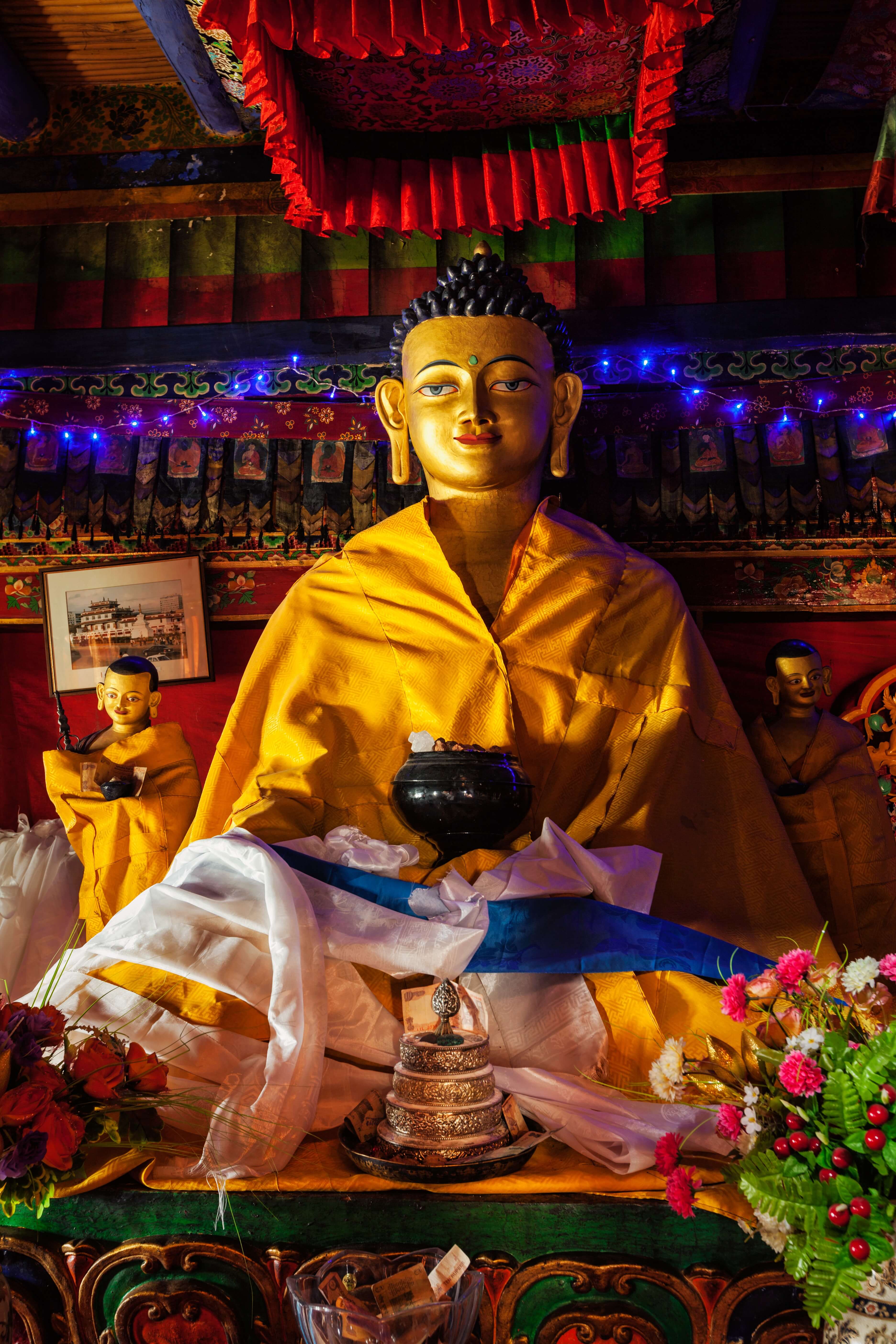
Why should a statue or thangka be consecrated?
To bring it to life, to make it a true statue or thangka.
What is the process to consecrate a statue, is it a physical process or simply a ceremony?
It is both actually. The monks proceed with an involved filling process, followed by a consecration ceremony.
Is the process the same for thangkas?
No. Thankgas simply undergo the consecration ceremony.
What is the filling process? What do the monks fill statues with?
Separate mantras for each part of the statue. Head mantras, neck mantras, torso mantras etc.. Mantras specific to each individual deity are meant to be placed in the approximate location of the heart of the statue.
It is necessary, in describing the method of creating prayer rolls, to explain both the traditional method and the method used by the Namgyal monks in Ithaca. Traditionally, prayers were inked on Tibetan paper with a woodblock, then dyed yellow. At Namgyal they use a xerox machine and yellow paper. Both methods are considered equally sacred. After the sheets have been printed, each mantra is cut out so that there is no white space remaining. All finished prayer sheets must be completely covered by mantras.
The next step is to roll the mantra sheets very tightly, overlapping the ends of the small strips upon each other around a tiny incense stick (meant to resemble the backbone of the statue). After the rolls are completed, they are marked, rolled in brocade silk and affixed with a red dot indicating the top of each roll.
Is there a special system for filling them?
Yes. Statues are filled from head to lotus throne. To begin, the monks place a pearl at the top of the head, signifying the brain. Next, head mantras are placed, with the monks making sure that each roll has the red dot at the top. Next are the neck mantras and the beginning of the torso mantras continuing in the same method. Special mantras individual to the specific deity are placed in the heart area, followed by the remainder of torso mantras. The lotus throne is treated specially, as a treasure house. Not only is it filled with lotus throne mantras, but it is at this point that the monks add powdered incense, special herbs, special earth, medicine pills that have been blessed for a long time, and any other items they deem appropriate. In larger statues they often add precious stones. The monks also place paper disks in the treasure house representing the male and female forms of the lord of wealth and the eight auspicious symbols. When the statue is full, the bottom plate is replaced and glued in if necessary. If a double vajra is not engraved on the bottom of a statue, the monks will affix a paper one to the base at this time. During the entire process, monks chant mantras while they work.
Does consecration take place on whatever day a statue arrives or when a suitable number of prayer rolls have been assembled?
No. The monks wait until an auspicious day occurs and proceed with the ceremony. At this time many statues can be filled in one day. Each statue is cleaned, both inside and out, and purified with perfume and incerise.
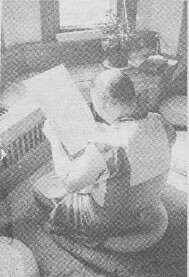
1. Ven Tsering Namgyal cutting the mantras and prayers which are to be rolled.
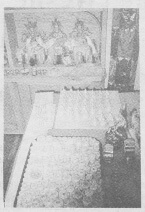
2. Rolled mantras in the shrine room to be blessed.
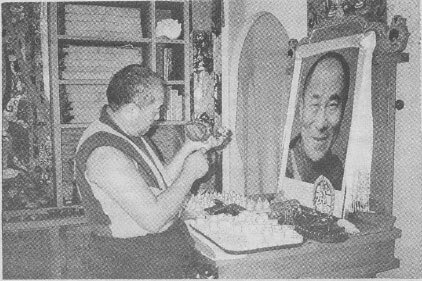
3. Ven Dhondup Gyaltsen checking a statue for insertion of the appropriate mantra rolls.
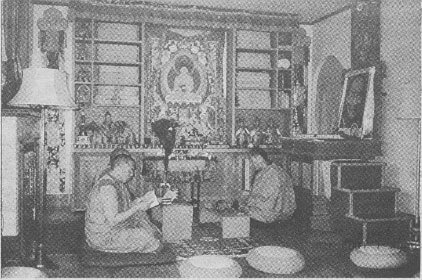
4. Geshe Tenzin Tabgye, Ven. Dhondup Gyaltsen, and Ven. Tsering Namgyal engaged in the consecration ritual.
What is the ritual performed?
The monks do a visualization practice where they welcome the wisdom being of the particular deity or image and dissolve it into the statue or thangka image, bringing it to life. The actual statue is called the commitment being. By receiving the wisdom being into the commitment being allowing them to become one being, the statue or thangka gains vitality and is made a true living image. At this time the request is made that the wisdom being will reside permanently, until this image or world system is extinguished. This step can be done for many statues and/or thangkas at once.
How will I know when my statue or thangka has been consecrated?
Your statue bottom will be sealed with a double vajra appearing on the bottom. Your thangka will be stamped with the Namgyal Institute stamp and signed by the monks as consecrated by the Namgyal monks.
How can I get my statue/ thangka consecrated? Is there a charge?
Although Namgyal does not have a set charge for consecration, Snow Lion recommends a minimum donation of $100 for statues and $50 for thangkas with checks made out to Namgyal Monastery to Namgyal directly. If you are purchasing a new statue or thangka from Snow Lion, and wish to have it consecrated, simply include your consecration donation with your order. If you already own a statue or thangka and wish to have it consecrated, send it directly to the monastery with your donation in the form of a check for the above recommended amount made out to Namgyal Monastery. Include an additional $15 for each item to cover return shipping and handling.

